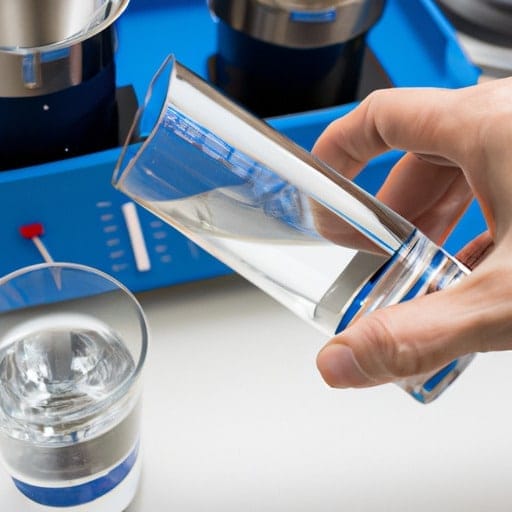Introduction
Distilled water is widely considered to be one of the purest forms of water available for consumption. But, in order to ensure that the highest possible standards of purity and safety are met, regular testing must be done to make sure that the water is prepared and stored correctly. In this article, we will explore the process of purity testing as well as the benefits of consuming distilled water that has been tested for purity.
Uncovering the Benefits of Purity Testing
The quality of distilled water is only as good as the equipment and process used to distill it. Contamination can come in many forms including biological, chemical and physical. Which is why regular testing of the water must be done in order to ensure that it is safe and free from any harmful contaminants. Distilled water takes a great deal of time, effort and cost to produce, so it is important that every step is taken to verify the purity of the end product.
Environmental Benefits
Not only is purity testing important for the safety of those consuming the water, but it also helps preserve the environment by keeping impurities out. By regularly checking for contaminants, distilled water manufacturers are ensuring that their product is not accidentally polluting the environment, or exposing it to any potential risks. This can help to keep areas safe and clean for years to come.
Food and Beverage Industry
In the food and beverage industry, having access to pure and safe water is essential. Distilled water is widely used in the production of many common food items and beverages, as it can often be easier and cheaper to use than filtered or spring water. By consistently testing distilled water for any potential contaminants, the food and beverage industry can continue to provide high quality and safe products for customers.
Breaking Down the Process of Water Testing
To ensure that the water meets all standards of purity, the testing process should involve a number of different steps. A laboratory setting is generally considered to be the most accurate way to conduct water testing, as technicians have access to specialized instruments and highly sensitive testing equipment.
Physical Examination
The water can be assessed visually and organoleptically, meaning that its physical appearance and odor can be examined. The technician will observe the color, clarity, and composition of the sample and look for any signs of contamination or foreign particles.
Chemical Analysis
Once the physical examination is complete, the technician will analyze the water for the presence of any chemical contaminants. This can include pollutants or additives, such as heavy metals, excess salts, pesticides, or other organic matter.
Microbiological Analysis
Lastly, the water can be tested for the presence of any microorganisms, such as bacteria, viruses, or protozoa. This step is important for identifying any potential health risks and can help to prevent the spread of disease.
Assessing Laboratory Results of Distilled Water
Once all of the tests have been completed, the technician will compile a detailed report of the findings. This will provide an assessment of the water’s safety and purity and can help to identify any potential issues or contaminants. The report will also include guidelines for what standards need to be met in order for the water to be certified as safe for consumption.
Examining the Benefits of Distilled Water Purity
Distilled water provides a number of benefits, from its lack of taste and odor to its reduced risk of containing waterborn diseases. Testing ensures that these benefits remain and that the water can be consumed in its purest form. Regular testing also allows for any corrective action to be taken quickly, in order to ensure that safety standards are not compromised.
Conclusion
Overall, purity testing of distilled water is essential for guaranteeing safety and standards. It can help to protect consumers and ensure that the environment remains free from contamination. Testing is also an important step in the creation of food and beverages and can help to provide customers with products that can be consumed in their purest form.

